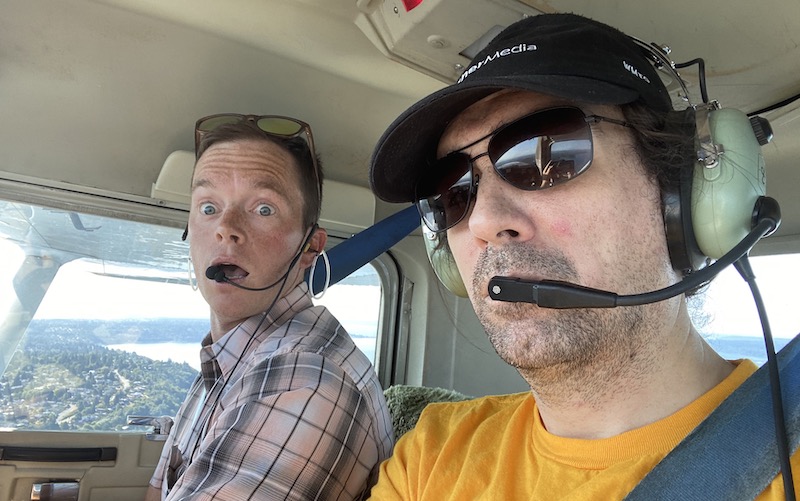Real Flying - The Adventure Begins!
Scroll DownToday is my 40th birthday. Choosing when to try for my Private Pilot License (PPL) used to be a hard, multivariate problem. Today, it isn’t. I’m on the path now, before I lose any more time.
The Pacific Northwest is an amazing place to fly. The combination of multiple microclimates, varied terrain, picturesque destinations and plentiful landing sites means a playground for the aspiring (or accomplished) pilot.
I’m training at Boeing Field (KBFI), at Galvin Flying, with CFI Steve Booth. Look at how confident this guy is in my skills!
 Yeah, we’re good.
Yeah, we’re good.
Ride along with me and Steve to Tacoma Narrows on a beautiful Seattle summer day.
For all my real-world training videos, see the Private Piloting playlist on YouTube.
Resources for PPL Students - Coming Soon!
My biggest early challenge in starting PPL training was navigating the various requirements, choices, benefits and costs that make up the constellation of considerations you run into right off the bat. Where to train? How much does it cost? Where and how to take ground school? Private pilot training may be simple in theory, but as soon as you need to lock in a choice, you can doubt yourself quickly.
I needed two things to make sense of it all - a plan, and some knowledge from other pilots.
Over the next few months you’ll get some resources to help plan your own PPL journey, some handy knowledge from other pilots who are on their own journeys, and perspectives from my own (hard-won) lessons in PPL’ing as a newbie.
What About Flight Sims?
Because this is FlightSimGuy.com, it’s natural to wonder - how do the real world and the sim world interact? What’s the overlap, where are the interesting areas of interaction and opportunity?
With a little over ten hours in with Steve, I can say I already see my flight sim time paying off. There are some habits that don’t quite translate to the real world, but the fundamental familiarity with the concepts, the forces at work, the considerations and tradeoffs in operating in three dimensions with the constraints of engine, fuel and surfaces all felt right when translated to the real world.
Simulators really have come a long way, and I think now more than ever there’s opportunity for the real worlds and sim worlds to benefit each other to make for better pilots and piloting - as well as a better experience for folks that just want to ride along!
I’ll have more to write and more resources to share about this interesting overlap as we go - for now, just know the future is bright, and splitting my time between the real cockpit and the virtual one seems to be paying benefits, as I imagine it would for any sim pilot who puts in the hours and wants to see their work translate to the real deal.
